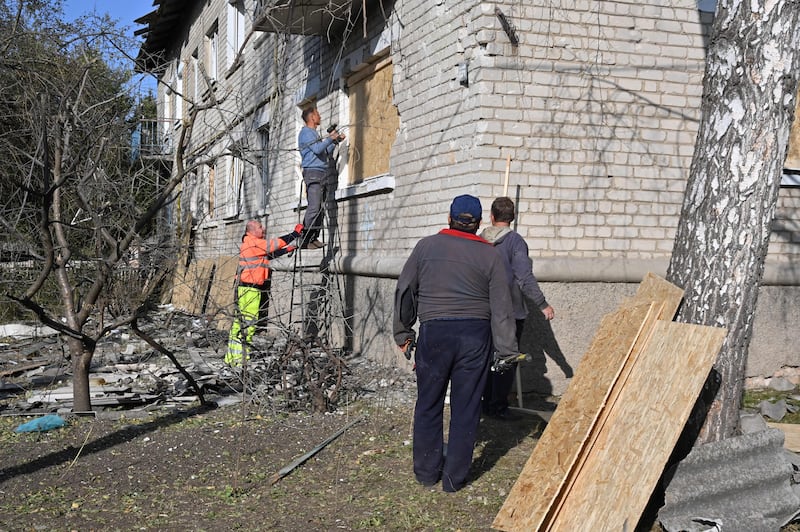Russian air defences have shot down 31 Ukrainian drones during a night-time attack on border regions, Kremlin officials said.
The move appears to be Kyiv’s largest single cross-border drone assault reported by Moscow since it launched its invasion 20 months ago.
The Russian defence ministry did not provide any evidence for its claims nor any details about whether there were any damage or casualties.
It also said Russian aircraft thwarted a Ukrainian attempt to deploy a group of soldiers by sea to the western side of Russian-annexed Crimea.
RM Block
The force attempted to land on Cape Tarkhankut, on Crimea’s western end, using a high-speed boat and three jet skis, the ministry said.
The Crimean Peninsula, which Russia illegally annexed from Ukraine in 2014, has been a frequent target of Ukrainian attacks.
The region has been the key hub supporting the invasion.
Ukraine is pressing on with a slow-moving counter-offensive it launched three months ago, even as uncertainty grows over the scale of the future supply of weapons and ammunition from its western allies.
Rob Bauer, the head of Nato’s military committee, sounded the alarm about depleted stockpiles.

With the war of attrition likely continuing through winter into next year, Admiral Bauer said of weapons systems and ammunition supplies: “The bottom of the barrel is now visible.”
He urged the defence industry to boost production “at a much higher tempo. And we need large volumes,” he told the Warsaw Security Forum, an annual conference, on Tuesday.
Also, the Pentagon has warned US congress that it is running low on money to replace weapons the US has sent to Ukraine.
Concern about the commitment of Kyiv’s allies has also grown amid political turmoil in the United States amid the unprecedented and dramatic removal of House Speaker Kevin McCarthy.
Some in the House Republican majority, and many Republican voters, oppose sending more military aid to Ukraine. The US is by far Ukraine’s largest military supplier.
The concerns prompted US president Joe Biden to hold a phone call on Tuesday with key allies in Europe, as well as the leaders of Canada and Japan, to co-ordinate support for Ukraine.
The call came three days after Biden signed legislation hastily sent to him by congress that kept the federal government funded but left off billions in funding for Ukraine’s war effort that the White House had vigorously backed.
Later on Wednesday, sirens blared across Russia and television station briefly interrupted regular broadcasts to air emergency warnings as part of nationwide drills that started on the previous day to test the readiness of the country’s emergency agencies.
Russian media said that the scenario of the drills envisioned the increasing danger of a conflict between nuclear powers and simulated action in response to a situation in which 70 per cent of housing and all vital infrastructure are destroyed and wide areas are contaminated by a radioactive fallout.
The drills follow a series of warnings from Russian officials that western support for Ukraine has increased the threat of a direct military conflict between Russia and Nato. – AP

















